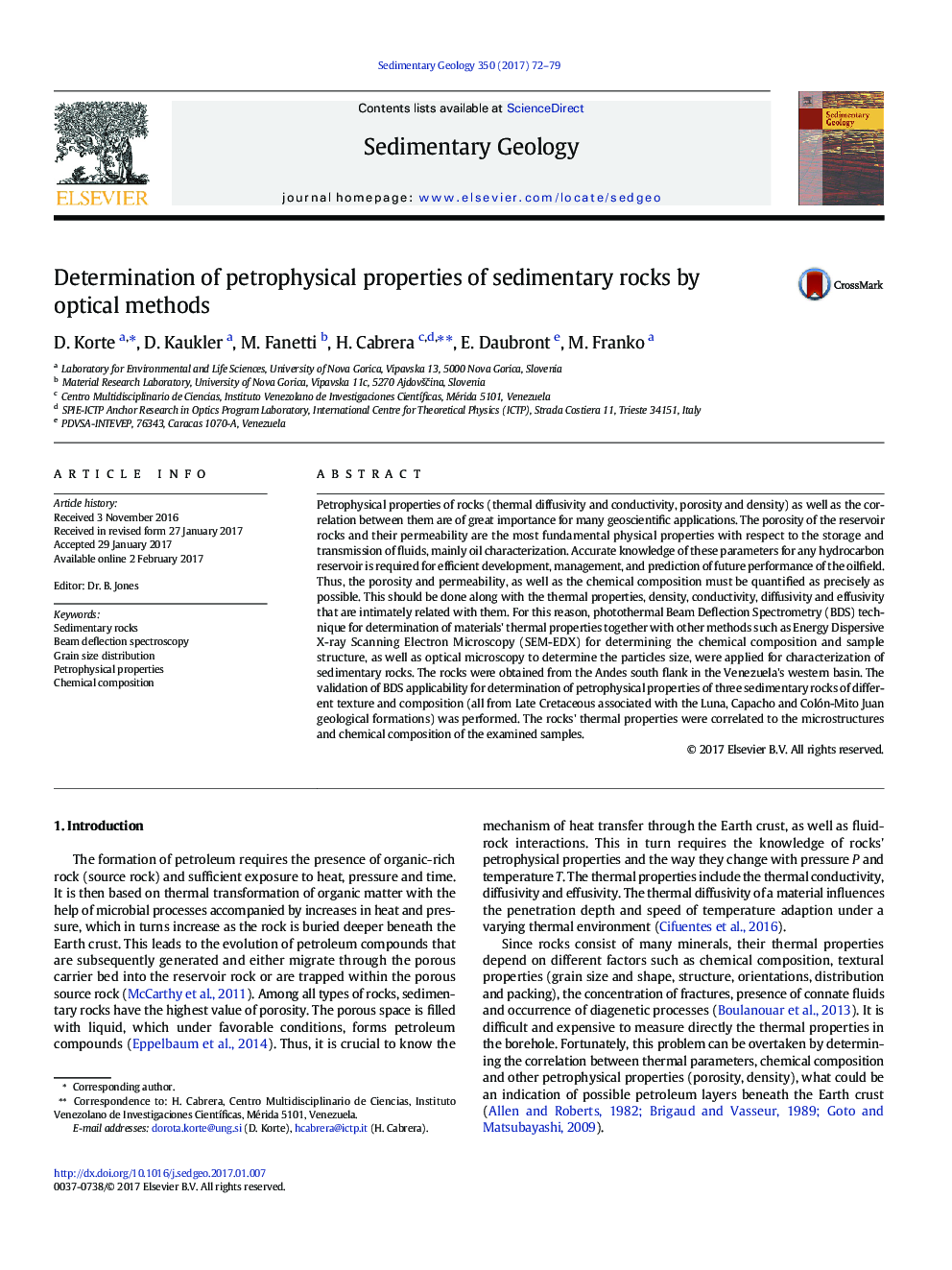| Article ID | Journal | Published Year | Pages | File Type |
|---|---|---|---|---|
| 5781317 | Sedimentary Geology | 2017 | 8 Pages |
Abstract
Petrophysical properties of rocks (thermal diffusivity and conductivity, porosity and density) as well as the correlation between them are of great importance for many geoscientific applications. The porosity of the reservoir rocks and their permeability are the most fundamental physical properties with respect to the storage and transmission of fluids, mainly oil characterization. Accurate knowledge of these parameters for any hydrocarbon reservoir is required for efficient development, management, and prediction of future performance of the oilfield. Thus, the porosity and permeability, as well as the chemical composition must be quantified as precisely as possible. This should be done along with the thermal properties, density, conductivity, diffusivity and effusivity that are intimately related with them. For this reason, photothermal Beam Deflection Spectrometry (BDS) technique for determination of materials' thermal properties together with other methods such as Energy Dispersive X-ray Scanning Electron Microscopy (SEM-EDX) for determining the chemical composition and sample structure, as well as optical microscopy to determine the particles size, were applied for characterization of sedimentary rocks. The rocks were obtained from the Andes south flank in the Venezuela's western basin. The validation of BDS applicability for determination of petrophysical properties of three sedimentary rocks of different texture and composition (all from Late Cretaceous associated with the Luna, Capacho and Colón-Mito Juan geological formations) was performed. The rocks' thermal properties were correlated to the microstructures and chemical composition of the examined samples.
Related Topics
Physical Sciences and Engineering
Earth and Planetary Sciences
Earth-Surface Processes
Authors
D. Korte, D. Kaukler, M. Fanetti, H. Cabrera, E. Daubront, M. Franko,
